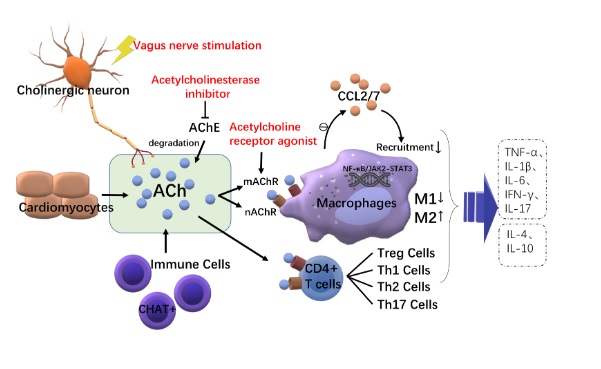Inflammation is the body’s immune system’s response to an ‘irritant’. This irritant might be bacteria, virus, muscle damage, a foreign object under the skin or mental issues such as depression and chronic stress.
The immediate effect of exercise is that it often causes and increase inflammations. Especially when a person exercise beyond normal activity levels or with new muscles, it can cause muscle and connective tissue damage, especially if done at high intensities or during a longer time. When this workout is beyond ‘normal’, the person hence always damages existing muscles to a certain degree. This happens for a ‘good’ reason. This damage causes low grade inflammations and the immune system then repairs the muscles and grows them back – usually stronger.
Inflammation is the most important part of the body’s repair process. The body’s immune system ‘needs’ a certain level of inflammation to activate and keep it responsive. It is therefore a natural and a healthy reaction to exercise. At the same time, it is very important to remember that repair and growth functionality is very dependent on how well the persons immune system is working. If the immune system is ‘busy’ fighting a serious disease, exercise becomes negative for the body and its muscles. Exercise can trigger a worse disease and longer-term muscle damage.
Muscles therefore become stronger thanks to the immune system and if it is in homeostasis (balance), then the same things happen to the immune system – it improves. Moderate and continuous exercise is therefore improving immunity and beneficial for the immune system.
It is very important to monitor, support and adjust exercise according to the capacity of the immune system. We usually ‘feel this’ and know it instinctively but with better data, for instance the VAGUS® ECG test, a person can track this ‘Vagal state of immunity’ objectively.
The Vagus nerve immune system
In recent decade it has become clear that the human body has 2 main immune systems:
- The molecular immune system. We are partly born with it (innate) and then it adapts as we live. It consists mainly of molecules such as white blood cells, antibodies etc. These organs involved are for instance spleen, bone marrow, lymphatic system and thymus.
- The neurological immune system. This is mainly considered to consist of the Vagus nerve-based neuro-immune system which is also called the cholinergic immune reflex.
The Vagus nerve carries an extensive range of signals from digestive system and organs to the brain and vice versa. It is the tenth cranial nerve, extending from its origin in the brainstem through the neck and the thorax down to the abdomen. Because of its long path through the human body, it has also been described as the “wanderer nerve”.
Mainly thanks to the work of Dr Kevin Tracey, this part of the immune system has been widely recognized during last twenty years. Since 2020 there has already been more than 10000 science papers discussing it. The Vagus nerve received even greater attention after the start of the Covid-19 pandemic. It was early recognized that the main cause of death due to Covid-19 is a so-called Cytokine storm.
Cytokines are very important immune system ‘signalling’ molecules. If there are too many ‘immunity activating’ cytokines, there will be too many immune cells which then go into ‘overdrive’ and damage tissues and organs. In Covid-19 this ‘cytokine storm’ is the reason that the body’s own immune cells sometimes kill the person infected with Coronavirus. The Vagus nerve is responsible both for sending out the ‘activating’ and ‘deactivating’ Cytokines. For severely diseased Covid-19 patients, it is very important that the vagus nerve is working properly and also sending out enough ‘deactivating’ Cytokines when the immune systems has become fully activated.
The cytokines are only a part of the cholinergic immune system activity of the Vagus nerve. I consider it the ‘central intelligence headquarters’ of immune response. If the vagus nerve is not working properly, then we know that the immune system cannot work properly.
As conclusion therefore I hope you understand how important it is to measure the Vagus nerve when one is doing exercise. With VAGUS® ECG it is easy to monitor when the Vagus nerve is working properly and exercise is beneficial both for muscle generation and immune system improvement. The VAGUS® ECG gives ‘in-depth’ analysis of the persons autonomic nervous system, health, inflammation levels and prediction of performance/recovery. To evaluate inflammation levels, I recommend doing regular and standard timed tests pre- and post-exercise (15 min and 2 hours).
Have a great day and enjoy your exercise,
Gustaf
Ps: To do the VAGUS® ECG test, users need to perform controlled breathing. Proper diaphragmatic breathing often requires practice. Relax muscles in the neck and shoulders. Follow the timer on the watch and breath in through the nose for five seconds. Then exhale fully during next five seconds. Start again until the 30 seconds ECG recording is finished. Feel how the lungs fill with air and inflate like a balloon while the upper part of the belly and lower ribs move outward. As you get better, the breathing value and most other vagal tones also usually improves.
Pss: Contact me to [email protected] if you are interested in implementing the VAGUS® COACHING platform for teams.
Science:For more information on the Cholinergic immune system, I recommend for instance Dr Kevin Tracey research. He is considered the founding father of bioelectronic medicine for his discovery of the body’s Vagus nerve based inflammatory reflex.
Some interesting Vagus nerve and immunity research papers:
- The vagus nerve and the inflammatory reflex—linking immunity and metabolism. Nat Rev Endocrinol. 2012 December. Pavlov & K. J. Tracey
- The inflammatory reflex. Dr. Kevin Tracey, Nature. 2020;
- Loss of Vagal anti-inflammatory effect in-vivo visualization and adoptive transfer, O Mahony, Aug 2009. Quote: The Vagus Nerve by releasing Acetylcholine stimulates T-regulatory cells that lower inflammation.
- The Vagus Nerve in the Neuro-Immune Axis: Implications in the Pathology of the Gastrointestinal Tract, Bruno Bonaz, 2017.
- Cholinergic modulation of the immune system – A novel therapeutic target for myocardial inflammation, Jing Lu et al, April 2021.
- Vagal tone diagnostics with hand-to-hand electrocardiogram (ECG). Gustaf Kranck, study presented at BFE in April 2019. (request a copy: [email protected])

© Gustaf Kranck

